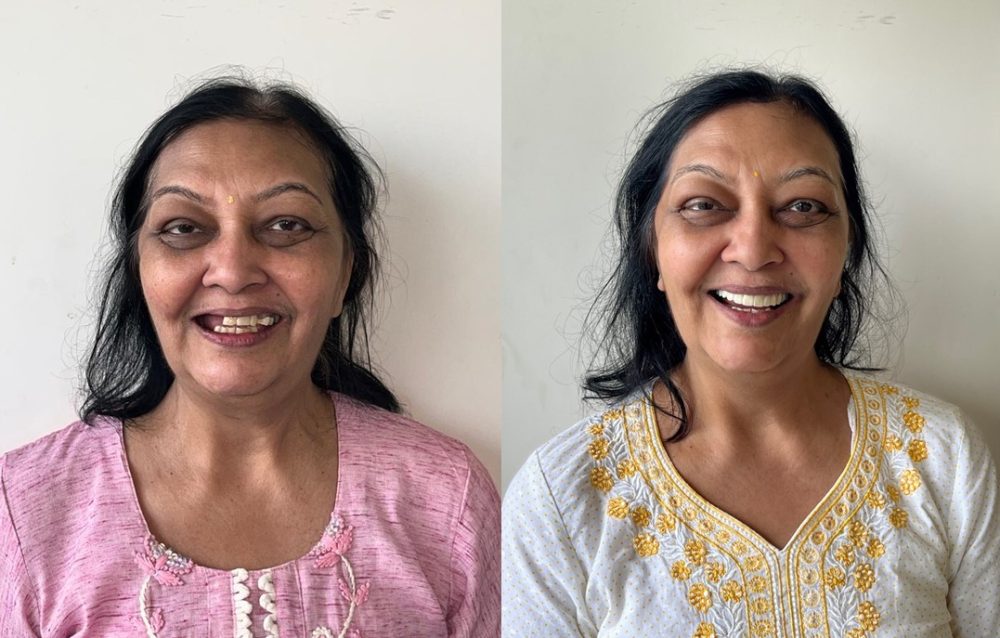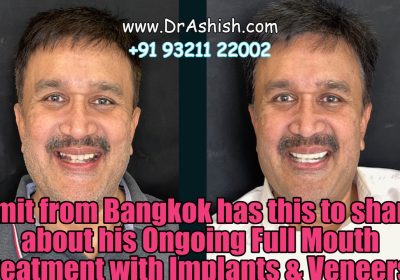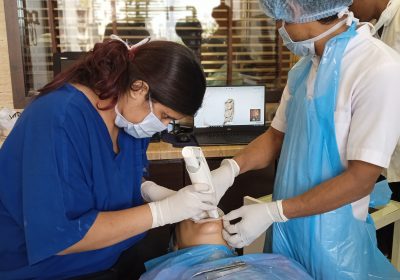Introduction:
Full mouth rehabilitation with implants is a comprehensive dental procedure aimed at restoring the function, aesthetics, and health of a patient’s entire mouth using dental implants. Dental implants are artificial tooth roots made of biocompatible materials like titanium, which are surgically placed into the jawbone to support dental restorations such as crowns, bridges, or dentures. This innovative approach to dental restoration offers numerous advantages over traditional treatments, making it a popular choice for individuals seeking a long-lasting and natural-looking solution for their dental problems.
Procedure:
The full mouth rehabilitation process with implants typically involves several stages, and it may vary depending on the individual patient’s needs and oral health condition. Here is a general outline of the procedure:
1. Initial Assessment: The first step is a thorough examination by a qualified dentist or prosthodontist. X-rays, scans, and dental impressions are taken to assess the patient’s oral health and determine if dental implants are a suitable option.
2. Treatment Planning: Once the assessment is complete, a customized treatment plan is created. This plan considers the number of implants needed, the type of dental restorations required, and any additional procedures like bone grafting or sinus lift if the patient lacks sufficient bone density in the jaw.
3. Implant Placement: In the next stage, the dental implants are surgically placed into the jawbone. This is usually done under local anesthesia, and patients can opt for sedation if they are anxious about the procedure. After implant placement, a healing period of several months is required for the implants to fuse with the jawbone through a process called osseointegration.
4. Abutment Placement: Once osseointegration is complete, abutments (connector pieces) are attached to the dental implants. These abutments serve as the foundation for the final dental restorations.
5. Final Restorations: After the gum tissues heal around the abutments, the final dental restorations, such as crowns, bridges, or dentures, are fabricated and placed onto the implants. These restorations are carefully designed to match the natural shape, size, and color of the patient’s existing teeth, creating a seamless and aesthetically pleasing smile.
Advantages of Full Mouth Rehabilitation with Implants:
1. Improved Functionality: Dental implants provide a stable and strong foundation for dental restorations, allowing patients to chew, speak, and bite with confidence, similar to natural teeth.
2. Enhanced Aesthetics: The restorations used in full mouth rehabilitation are designed to look natural, enhancing the overall appearance of the smile and boosting self-confidence.
3. Long-Term Solution: Dental implants are known for their longevity. With proper care and maintenance, they can last for many years, making them a cost-effective option in the long run.
4. Preservation of Jawbone: Implants stimulate the jawbone, preventing bone loss and maintaining facial structure. This is in contrast to traditional dentures, which may lead to bone resorption over time.
5. Comfort and Convenience: Unlike removable dentures, dental implants are fixed in the mouth, eliminating the discomfort and inconvenience associated with removable prosthetics.
6. Improved Oral Health: Full mouth rehabilitation with implants can improve oral health by preventing the shifting of remaining natural teeth and reducing the risk of gum disease.
Latest Technology:
As of my last update in September 2021, there were continuous advancements in dental implant technology, and it is likely that even more innovations have emerged since then. Some of the latest technologies and techniques include:
1. Guided Implant Surgery: Computer-guided implant placement uses 3D imaging and virtual planning to precisely position the implants, reducing surgery time and improving accuracy.
2. Immediate Load Implants: These implants allow for the placement of temporary restorations on the same day as the implant surgery, allowing patients to leave with a functional smile immediately.
3. Zirconia Implants: Zirconia implants are an alternative to traditional titanium implants, offering excellent biocompatibility and a more natural tooth-like appearance.
4. CAD/CAM Technology: Computer-aided design and manufacturing technology enables the creation of highly customized and precise dental restorations for optimal fit and aesthetics.
5. All-on-4 and All-on-6 Implant Concepts: These techniques involve strategically placing a fixed prosthesis supported by four or six implants, respectively, reducing the number of implants required and shortening treatment time.
6. Digital Smile Design: Advanced software allows dentists to design the final smile digitally, giving patients a preview of the expected results before starting the treatment.
Keep in mind that dental technology is continuously evolving, and it’s essential to consult with a qualified dentist or prosthodontist to learn about the latest options available for full mouth rehabilitation with implants.






